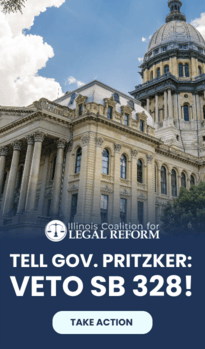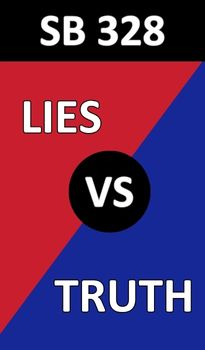* NBC 5…
Chicago Public Schools can’t yet say if there will be a summer school program. In the past, thousands of students have participated. But for this summer, the current website doesn’t list any dates or details.
Oy. More kids in harm’s way.
* According to CPS, last summer’s program cost $16 million…
While the city looks to state lawmakers, the new head of the Principals Association Troy LaRaviere blames irresponsible spending.
“We have almost 40 percent more schools and only two percent more students,” LaRaviere said. “Who does that? Who spends money that recklessly?”
* But did all those new schools (charter and otherwise) provide the competitive push that neighborhood schools needed? The Trib thinks so…
A scant 16 years ago, Chicago Public Schools students were just as likely to drop out of high school as they were to graduate. Half finished, half didn’t. An appalling coin flip.
Today an astonishing turnaround gains steam: Almost 3 in 4 CPS students graduate, and that number is projected to rise, according to a new study from the University of Chicago Consortium on School Research. And, no, these higher rates are not the result of setting the academic bar lower, the study says.
CPS has boosted graduation rates for students of all races and income levels. That’s more than a measure of success at elite and charter schools. Neighborhood schools are now close to matching the traditionally higher graduation rates at charter schools. In other words, competition works for CPS. Big time. […]
For years, graduation rates at neighborhood schools lagged charters by 10 percentage points or more. But the neighborhood schools — non-charter and non-selective enrollment schools as defined by the consortium study — have closed that gap. Critics have long complained that charters siphon off the best students, leaving neighborhood high schools to languish. But the consortium research suggests the opposite: Innovative charter competition spurs all schools to work harder and smarter, to educate students better.
The full report is here.
It would be nice to hear the governor acknowledge this very real progress.
















- sal-says - Friday, Jun 10, 16 @ 12:48 pm:
== It would be nice to hear the governor acknowledge this very real progress. ==
From this IL elected official with the title governor? Acknowledge any IL progress? And especially CPS? When the sky turns permanently orange.
- Chungas revenge - Friday, Jun 10, 16 @ 12:54 pm:
I can hear the governor getting tears in his eyes all the way down here.
- Last Bull Moose - Friday, Jun 10, 16 @ 12:54 pm:
Chicago will spend more on extra police and lawsuits due to no summer school than the $16 million cited above.
Penny wise and pound foolish.
- Chicago Schooler - Friday, Jun 10, 16 @ 12:59 pm:
So Mr. LaRaviere must support Mayor Emanuel’s decision to close 50 schools with excess capacity. So he and the mayor see eye to eye after all!
- LivCo - Friday, Jun 10, 16 @ 1:00 pm:
Neither “innovative” nor “competition” appear once in that report. In fact, the real suggested improvement is getting freshmen on track to graduate - a move that has been going on since the mid 2000s. Methinks the Tribbies are projecting a bit.
- Illinois Bob - Friday, Jun 10, 16 @ 1:00 pm:
Actually, summer schools for high school classes that then don’t need to be taken in the Spring or fall actually save money for many districts.
In my district, they have a flat rate of $3K per summer school sessions for all teachers, while the average in Spring and fall is about $8K for teacher per class.
Yet the district charges the students a fee fro attending summer class and SAVING the district a bunch of money.
Welcome to the wonderful world of public education….
- PalumbrasWay - Friday, Jun 10, 16 @ 1:05 pm:
I can think of one school that probably didn’t need to be built….
http://www.chicagotribune.com/news/watchdog/ct-madigan-school-grant-met-20150717-story.html
- @MisterJayEm - Friday, Jun 10, 16 @ 1:09 pm:
The consortium’s report says various factors could account for the changes in graduation rates, including 1) changes in student performance and student demographics, 2) increasing numbers of charter and selective, and 3) changes in school practices around improving attendance and course performance.
While giving maximum credit to “tougher competition” between charters and neighborhood schools, the words “performance”, “attendance” and “demographics” all fail to appear in the Tribune editorial.
By contrast, the words “competition” and “compete” do not appear in either the consortium report’s executive summary or in its research brief.
But other than that…
– MrJM
Executive summary: https://consortium.uchicago.edu/sites/default/files/publications/High%20School%20Graduation%20Rates%20ES-Jun2016-Consortium.pdf
Research brief: http://chicagotonight.wttw.com/sites/default/files/article/file-attachments/Educational%20Attainment%20of%20Chicago-Jun2016-Consortium.pdf
- Rich Miller - Friday, Jun 10, 16 @ 1:35 pm:
===one school that probably didn’t need to be built===
Maybe not to that extent, but there was an overcrowding issue in that neighborhood. I think what happened is that some folks who sent their kids to private (Catholic) schools moved out and lots of people who can only afford a public school moved in.
- Anon221 - Friday, Jun 10, 16 @ 2:21 pm:
Rauner can’t or won’t acknowledge new businesses or expansion of businesses in Illinois (ie Amazon in Edwardsville) because that distracts from the messages of his TurnAround. This school report does the same. It takes away from his message and mission, so something must be wrong with that report. I’ll bet the Supes are workin’ hard to see the dark “truth” of things! (snarkiness implied)